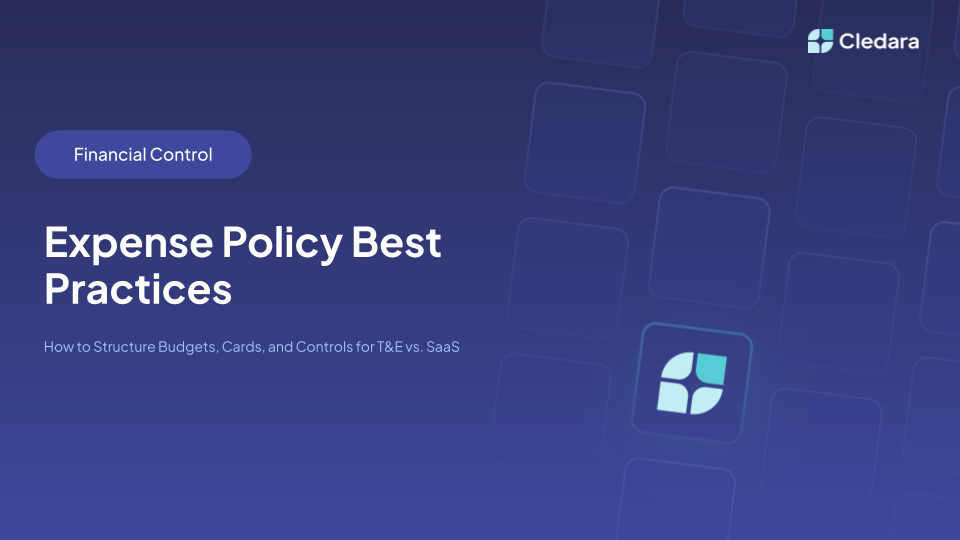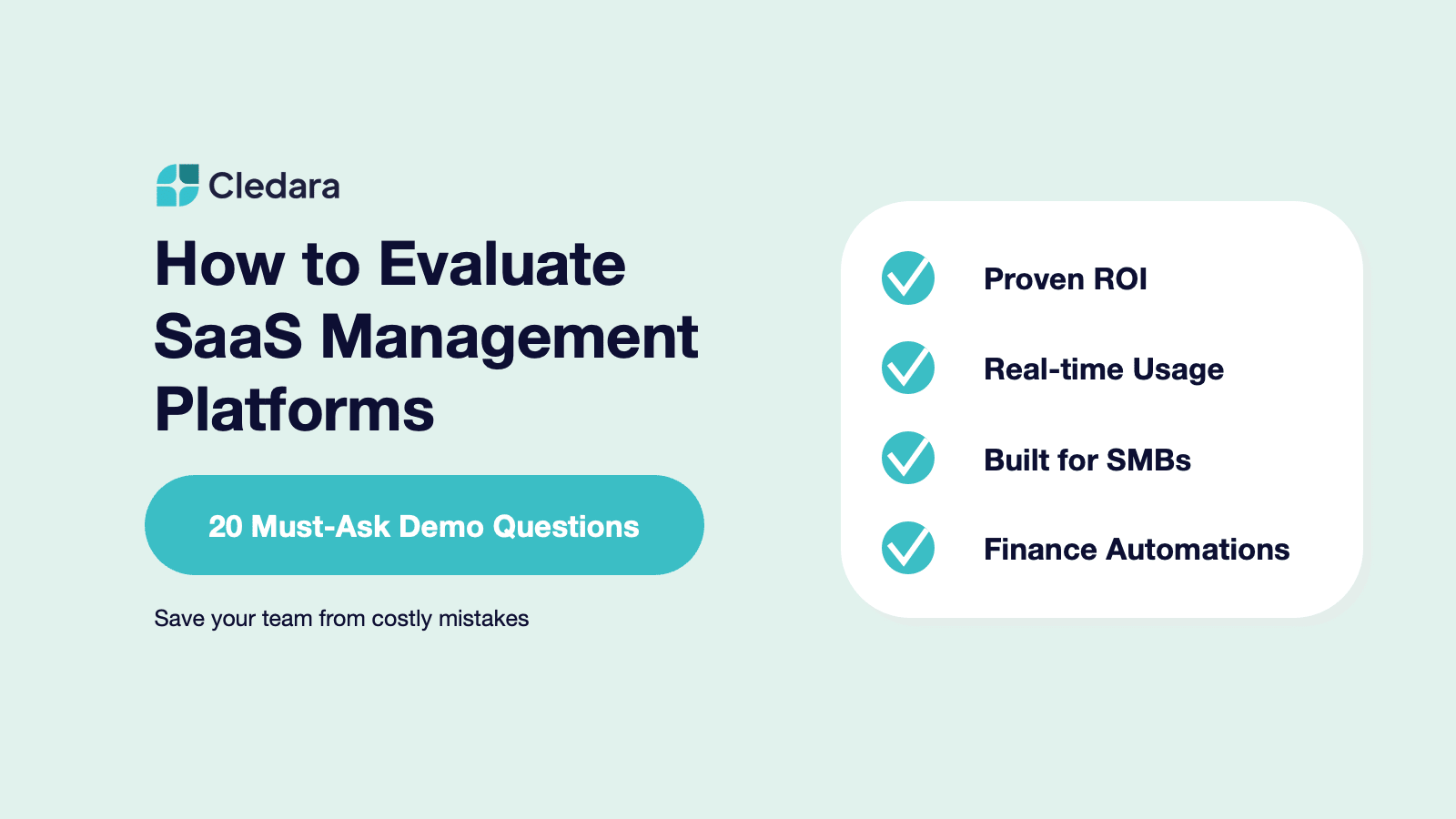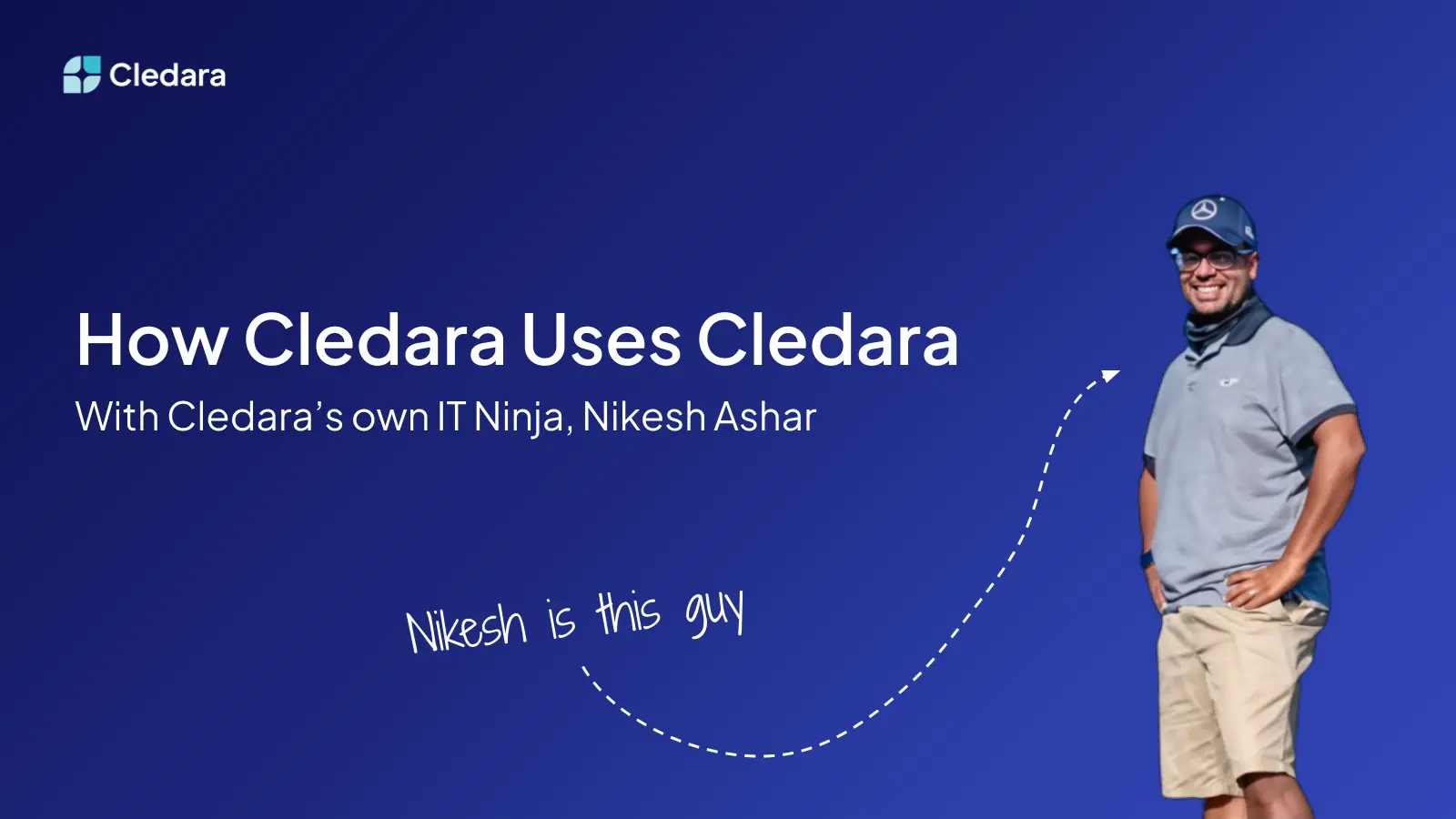Most of the time, SaaS providers only list subscription prices on their websites. They don’t tell you that contracts are negotiable. Therefore, when you purchase a subscription, you'll typically receive a standard contract for the service.
However, any trustworthy vendor is open and willing to negotiate a contract that benefits both parties. This is especially true for enterprise companies since they tend to use a lot of licenses over time. But negotiating a win-win contract is not easy. Your procurement team needs to be clear on certain negotiation points.
In today's post, we'll discuss the basics of a solid SaaS agreement and why they are so important.
By entering your email you agree to the Privacy Policy and consent to receive emails from Cledara.
What Is a SaaS Agreement?**
A SaaS agreement is a contract between a customer and a vendor that establishes the minimum SaaS provisioning arrangements. It's worth mentioning that the terms SaaS agreement and software license agreement are sometimes used interchangeably, although they actually refer to different concepts.
But what is the difference between a SaaS agreement and a software license agreement? Essentially, establishing a software license agreement is akin to making a one-time purchase for a local software license. This type of agreement typically applies to closed software that can’t be modified or customized.
In contrast, when you sign a SaaS agreement, you are signing a contract for:
- A monthly or annual subscription
- Access to a cloud-based platform
- A platform that you can customize according to your needs
Simply put, when your company purchases an on-premises Excel license, it involves a software license agreement. However, when they acquire a subscription to Microsoft 365, it implies a SaaS agreement.
Usually, when you purchase a SaaS subscription individually, you sign a contract with the vendor. In fact, you always sign a generic SaaS agreement as soon as you accept the terms and conditions.
However, things are different when a larger company is buying a software subscription. Even though the tool could be easily hired under a general contract, it is preferable to negotiate a deal that benefits both your company and the provider.
Is Negotiating Really Worth It?**
An increasing number of companies are relying on SaaS solutions to streamline and automate their daily operations. Consequently, it is common for vendor relationships to be long-term.
So, why are companies not negotiating their SaaS agreements more often? There is a common misconception that negotiating with a SaaS vendor is more of a draining task than an opportunity. Yet, it doesn’t have to be that way.
On the contrary, any vendor will have the same interest as you in building a win-win scenario. By providing exactly what you need, they ensure long-term customer loyalty. Besides, during negotiations, they can present additional products from their portfolio that align with your demands.
Therefore, even though the negotiation process requires some time, it is still worthwhile. By engaging in it just once, you can:
- Secure a pricing arrangement that is lower than the standard cost
- Get a service that is specifically tailored to your business's needs
- Express your commitment to a long-term business partnership with the vendor, leading to special considerations and benefits.
Before The Negotiation**
Getting a good deal starts well before the actual negotiation takes place. Before meeting a Sales representative, you must be well-informed and prepared.
In order to reach a successful agreement, ensure that you’re aware of the terms that competitors are willing to offer. Even if you've already decided which supplier to hire.
It is also a good idea to learn as much as possible about the tool you are about to subscribe to. The better you know what you are buying, the better you will be able to negotiate the contracting conditions.
Who Is Negotiating?**
You probably think that this issue falls only on your procurement team. Well, that shouldn’t be the case. Negotiating a good SaaS agreement involves many teams in the company.
To be well-prepared for the negotiation, procurement will require the insights of various teams, including:
- IT, to provide precise information on the integrations and requirements the tool must have.
- HR, to offer an overview of their short-term hiring plans, so it’s clear how many accesses to the platform you will need.
- Compliance, to guide on the regulations the tool must comply with.
- Finance, to provide detail about the budget allocated for SaaS subscriptions.
- End users to give insight into what features they need from the tool.
What Should You Negotiate in a SaaS Agreement?**
You are probably wondering what aspects of the contract your company can negotiate.
When it comes to a SaaS agreement, you can discuss:
- Scope of the contract
- Clauses on renewability & duration
- Cancellation clauses
- Price
- Data security
- Compliance requirements
- Technical support
- SLA
- Limitations of liability
- Indemnity
Let's take a closer look at each one.
Scope of the Contract
When discussing the scope of the contract, you should have clarity on:
- The number of seats you require on the platform - you will probably get discounts for purchasing subscriptions in bulk. But you should be careful not to pay for extra seats.
- The precise features you need - applications usually come with a wide array of features, but probably not all of them are relevant to your business. Negotiate to get a plan with the features that you need.
Clauses on Renewability & Duration
Renewability and duration clauses are important points to negotiate, and they will greatly depend on your convenience and the supplier's capabilities.
When it comes to the contract’s duration, you can generally choose between a monthly or yearly subscription. Yet, you can also speak with your vendor and set up an arrangement for a specific number of months.
Meanwhile, when it comes to renewal terms, you should pay close attention to whether the renewal is automatic or requires mutual agreement. While automatic software renewals can offer convenience, there are a few potential drawbacks to consider, including:
- Unexpected cost increases
- Missing a chance to review the solution’s performance and value for your business
- Extending a contract that you wish to discontinue and facing penalties for “early termination” after the renewal date
Hence, if you choose automatic renewal, make sure to mark those dates on your calendar.
Cancellation Clauses
You should reach an agreement with the supplier about whether it is possible to cancel your subscription earlier than established. And, if so, determine under what circumstances (e.g., app malfunctions or service interruptions).
We suggest you also specify whether there are any penalties or additional fees you should pay in the case of early termination of the contract.
Price
This is a critical negotiation point, especially considering SaaS vendors are increasing their prices. Above all, keep an eye out for:
- The final cost of the subscription - clarify with the supplier what the exact price of the subscription will be, including any additional costs or fees that may apply.
- Possible discounts - explore the chance of getting discounts based on factors like the length of the contract, the number of seats contracted, or your geographic area.
Data Security
When you use an application, you input sensitive information about your company and your clients.
As a result, when negotiating, you should define:
- Data ownership: Clearly determine who owns the data inputted into the application.
- Data access: Define who has access to the data and under what circumstances.
- Data usage: Establish how the data will be utilized and for what purposes.
- Data protection and backup: Discuss the measures in place to safeguard the data’s security and integrity.
- Data loss responsibility: Determine who bears the responsibility in the event of data loss or breaches.
Technical Support
You can negotiate the level of technical support based on your specific requirements. For example, if your organization doesn't have expertise in this specific kind of tool. Team members will likely require significant technical support. Hence, you might want to consider including personalized support in the contract and even training sessions for your team.
However, if your staff is well familiar with this type of software and they need less support than what the provider initially offers, you could potentially negotiate a reduced price to reflect this.
SLA
SLA (Service Level Agreement) is about setting expectations regarding:
- The level of service
- System availability
- Response time for service outages
A vendor service interruption may not necessarily interfere with your ability to serve your own clients. However, it has the potential to directly impact your company’s reputation. Remember: the only company that can be held accountable for failing to meet your clients' expectations is your own, not your vendor's. You can prevent this by negotiating an SLA that helps you ensure consistent service to your clients.
Limitations of Liability
Vendors will typically include clauses that limit their liability in certain circumstances. It's prudent to review these limitations carefully and negotiate to remove or adjust them when necessary.
For example, the provider might stipulate that they are not responsible for data loss due to a server outage. In that case, you might negotiate for a stricter data backup and recovery clause.
Indemnity
Indemnities are provisions where the vendor agrees to compensate you for specific harmful events or conditions.
These could include:
- Third-Party Claims related to the use of their services
- Negligence or misconduct
- Data breaches
By including indemnity provisions in the agreement, you can establish clear guidelines for the vendor's accountability and protect your interests in case of unforeseen events or adverse circumstances.
After the Negotiation**
Once you have reached a solid SaaS agreement, you should assess the solution’s performance. Thus, you’ll be able to determine whether to renew it, cancel it, or adjust the agreement.
During the review process, you may want to consider:
- ROI: Analyze the value and benefits the software brings to your business in relation to the cost incurred.
- Performance metrics: Monitor factors such as system uptime, response times, and reliability.
- End-users insights: Seek feedback from the users of the software. Their experiences can provide valuable information regarding usability, functionality, and overall satisfaction with the solution.
- Usage metrics (for cost-per-usage agreements): Monitor the usage metrics closely to assess if the subscription aligns with your usage patterns and cost projections.
By consistently reviewing these aspects, you can make informed decisions about the future of the software subscription.
Negotiate With Data on Your Side**
Being well-informed during the negotiation process is crucial to get the subscription you need at a fair price. And not only that: depending on the size of your company, you may need to negotiate more than one contract. Fortunately, Cledara can help streamline this process.
Cledara is the only SaaS management platform that helps you to:
- Get a centralized view of all your software subscriptions
- Evaluate software ROI
- Collaborate effectively with IT and Finance teams
- Get reports on software usage and performance
- Make sure you don’t miss renewal dates
- Spot unnecessary tools and unsubscribe with one click
- Identify savings opportunities and optimize software spend
- Have a single place to manage vendor contracts, payments, and software subscriptions
Want to learn more? Book a Cledara demo today.

.webp)
















.webp)

%2520(1).webp)